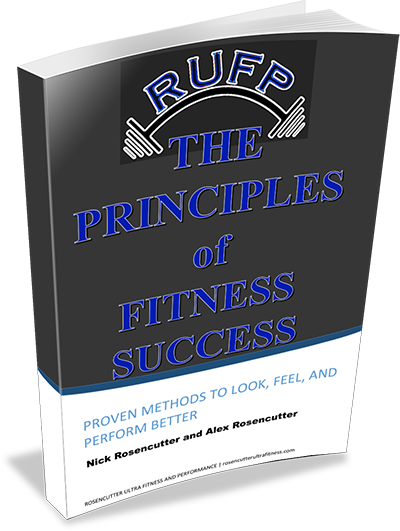Today we have the first part of a three part article series about stretching from Nick. Check it out!
In a world where research and tons of practical experience has made it pretty clear that static stretching is overrated and often overused, plenty of people still go about wasting their time with it. In certain specific situations, it can be warranted but it often is not and many times can cause more harm than good. Stretch lovers start hating but at least read on and try to learn something 🙂 (Note: we are talking about static stretching; i.e. holding a stretch for time. Dynamic/active stretching is great to build functional mobility and we will discuss it later)
When might you actually need it?
If muscle tissue is truly shortened, some long duration stretching or at least frequent stretching may be warranted. This is not as common as you might think and if it is the case, soft tissue manipulation is usually much more effective than static stretching alone. The typical, 30 second to 1 minute stretch is generally not going to do enough to change the situation of truly shortened tissue. What areas do I see that typically DO need this? The calves, the chest and the lats come to mind (generally speaking of course). Notice I didn’t say hamstrings or back, which happen to be two very overstretched places in the body. Furthermore, when we are talking about shortened tissue, fascia (webbing that holds our muscles, organs, etc. in place and gives our body functional connections from head to toe, front to back, side to side and everything in between) is pretty much guaranteed to be involved and fascia is going to need more than a typical static stretch to make it change. The areas that actually do need work will also often be asymmetrical (i.e. left pec and right lat are pretty common)
Feelings can be Deceiving
I can’t tell you how many times I hear someone say to me “My ____ feels tight.” That space is often filled in with hamstring or back. Because something “feels” tight, does not mean that it is actually short and in need of stretching. If my shoulders are rounded forward, my upper back tissue is going to be pulled “taut” because it is being overstretched all day from my faulty shoulder position. This does not in any way mean that it is short and in need of lengthening. If we open up the pec muscles in front of the shoulders and restore a better shoulder position, then the upper back tissues can relax since they are in a better resting position. If we stretch the upper back tissue because it “feels” tight, we make ourselves worse and irritate the tissues even more.
So what is really going on then if I do have one of these deceiving feelings? We have more than one possibility….
Positioning vs “Tight”
If my pelvis is tilted forward, my hamstrings are going to be put on stretch automatically because of the position that they are in. They are being pulled “taut” just like my upper back example above. If my pelvis is rotated one way, my outer hamstring on one side and inner hamstring on the other will be pulled abnormally and might feel “tight” again. Neither of these situations require stretching. Stretching will pull me farther into my faulty position and irritate the issues worse. They will be even “tighter.” Repositioning the pelvis to a better position will take the slack out of those hamstrings, put them in a better resting position and relieve the “tight” feeling. Now, on some occasions, people actually do have shortened hamstring muscles and they might actually need some legit stretching, tissue work, etc. but it is not the norm; at least in my experience. Check out the video featured on this article for repositioning drill examples. On a side note, tight could describe tissue that is lengthened or shortened, which are two very different situations that require very different plans. Rather than using the word tight, it is much more reliable to use stiff/short (still different in their own rights) and stretched/lengthened.
Kinetic Chain Issue
Carrying things further and going back to the aforementioned fascia, there is a line of fascia that runs from the bottom of our feet all the way up the back side of the body to the top of the head, connecting our calves, hamstrings, back, posterior neck and everything in between into one long functional line. In Thomas Myers’ Anatomy Trains, this is known as the superficial back line. Sticking with our hamstrings example and looking at this line, if we have tension in our calves or the bottom of our feet, our hamstrings can also be pulled due to this fascial connection. In an example like this, we probably need to get our feet and/or calves freed up in order to get the hamstrings to release. There are many examples of these relationships in the body. A neat trick: take someone who can’t bend over and touch their toes with straight knees, have them roll a la crosse ball on the bottom of their foot for a minute or so and then have them bend over again. Watch them bend farther without ever touching their hamstrings.
Neurological Issue (In all actuality, everything is)
Another source of stiffness is neurological. If I have an antagonistic or synergistic muscle that is not doing its job, then the muscle at hand can be overfired/overused by the brain (trying to use layman’s terms here), leading to a neurological “stiffness.” Staying with the hamstring example, if my synergistic glute muscles (they share function with the hamstrings) are not being fired or utilized appropriately, my brain will tap into my hamstrings excessively, causing them to be overactive. Again, stretching them will not help in this situation. Getting my brain to use my glutes correctly will help balance out the firing process, unlock the hamstrings and everybody will be happier. Its kind of like having a lazy member in your work group who doesn’t do their fair share with the project. When he/she doesn’t do their part, the other group members get upset. When one muscle doesn’t do its fair share, the other muscle or muscles get upset. There are tons of examples of this that happen in the body and ironically, the positioning issue mentioned above is usually related to these neurological firing patterns. Everything goes back to the brain.
Expanding on this point: Take someone who is stressed out, on edge, and is constantly in fight or flight mode. Their muscle tone can be overactive all over just because they are stuck in a sympathetic fight or flight state and their body can’t relax. Simply breathing properly (exhale!) and getting their system back towards a parasympathetic rest and relaxation state, can help calm down muscle tone and improve mobility and posture without touching or moving a single thing. This can carry over to every other point made in this article. Stretching and torquing on a system that is already on alert can pull it farther in that direction, which is not what we want. Another neat trick: take someone who can’t touch their toes like the example above, put them on their backs with their feet on the wall and have them inhale through their nose and exhale through their mouth into a balloon for 3 to 4 cycles of 4 breaths or so while getting air and movement into the front, sides and back of their trunk and chest. Have them bend again and I betcha they get farther. Simply calming the system down and releasing the “clenching” that is going on can improve motion instantly.
When I explain these things to some people, I often get the common argument “but it feels so good to stretch it.” Well, it must not feel good for very long and it must not be working because you are still sitting in my assessment room complaining about ongoing issues and pain. If stretching were the answer, you wouldn’t still be having the problem. (too blunt? 🙂 Get the correct muscles firing with the correct corresponding muscles inhibited in combination with restoring proper position, movement, breathing and nervous system state and the whole team will be much happier.
Stay tuned for part 2!
Bonus section: Why shouldn’t you static stretch before physical activity (in most cases)? Statically stretching a muscle causes it to inhibit or “turn off,” and also puts the muscle at a resting length that is less than optimal for contracting how we want it to for optimal performance. We want to get our muscles actively moving through controlled ranges of motion in order to appropriately prepare those muscles and our nervous system for the upcoming work. Save the static stretching for later if it is truly needed. More on this in part two.

